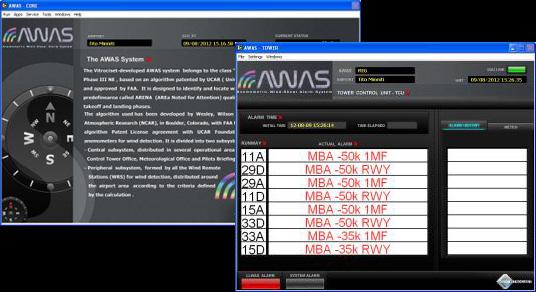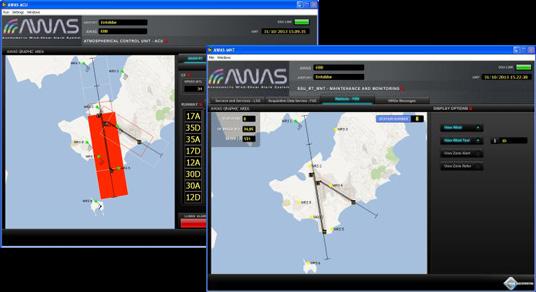Home / Products / Meteorology / AWAS
AWAS
AWAS - Anemometric Wind-Shear Alarm System - is designed and manufactured entirely by Vitrociset. This system supports the surveillance activities of pilots and ATC by real-time monitoring of Wind-Shear conditions and when necessary, raising the alarm at the airport.
Wind-Shear, an atmospheric phenomenon marked by sudden changes in wind direction and intensity, is a frequent cause of accidents at take-off and landing or during low altitude flight. It thus needs to be monitored continuously to ensure the safety of operations at airports exposed to it, mainly because of the orological configuration.
AWAS is an advanced system for monitoring wind-shear and microburst phenomena based on an algorithm registered by the UCAR and approved by the FAA, which is the basis of the LLWAS-NE system phase III (Low-Level Wind Shear Alert System - Network Expansion).
AWAS acquires, stores, processes and presents all the weather data, alarms and messages pertaining to this class of applications in line with the latest ICAO and WMO recommendations.
The main features of the AWAS system are:
- efficient radio communications free from electromagnetic interference;
- hardware and software redundancy with backup of the critical parts of the system;
- use of low-power consumption electronic devices, suitable for remote stations powered by solar panels;
AWAS is based on a client/server architecture. A network of anemometers located around the airport and connected wirelessly collects the wind data. The data flow into the system’s central unit, which is able to detect and identify wind shear and to distribute the information in real time to its remote locations, connected via a TCP/IP Ethernet network.


Believe you can and you are halfway there.


